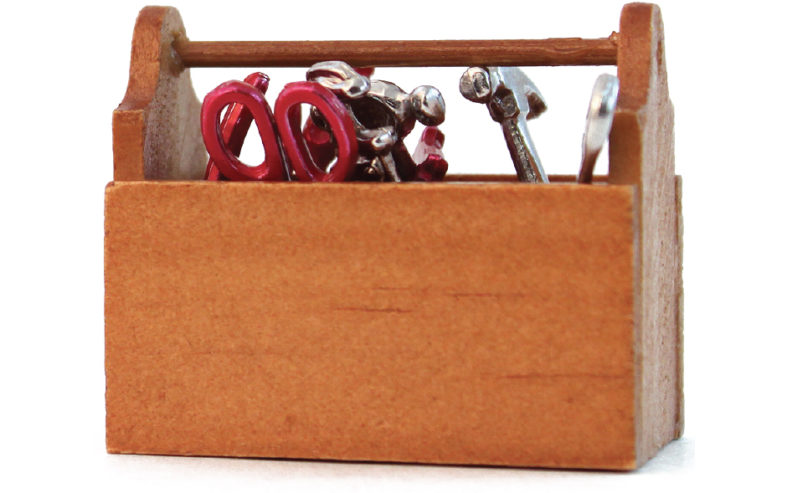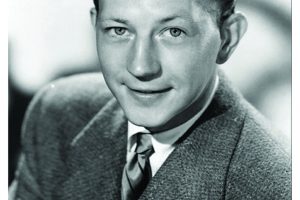By D. Joeff Williams
My father was a civil engineer who loved to do carpentry as a hobby. As a kid, I had a chance to help him on some of his projects and to share in his enthusiasm for woodworking. My dad showed me that different tools are used for different purposes. Which tool you use depends on what you are trying to build. I still have Dad’s old wooden tool box and some of the tools we used on the projects we worked on together.
Since I became chairperson of the Academy’s Council on Professionalism (COP), I have been thinking a lot about the lessons my dad taught me about tools. It has been an exciting year, during which the council has focused on how we can build bridges from the Academy to the desk of the practicing actuary. That’s where the life lesson I learned from my dad has come in handy. The COP’s objective is to make actuarial professionalism—the commitment to the Code of Professional Conduct, standards of qualification and practice, and the professional counseling and discipline process—a part of the daily practice of actuaries in the United States. We want professionalism to become so ingrained among U.S. actuaries that it becomes “cultural,” and we are seeking to provide the tools necessary to accomplish this objective. (See D.J. Williams, “Creating a Culture of Professionalism,” Actuarial Update, November 2016.)
A Great Set of Standards
I was fortunate to come on board as COP chairperson just as the Academy’s Penultimate Past President Tom Wildsmith had completed a series of articles in this magazine on the development of the Code of Professional Conduct, the U.S. Qualification Standards (USQS), the actuarial standards of practice (ASOPs), and the profession’s counseling and discipline process. The series, called “The Academy and the Web of Professionalism,” provides a detailed description of the professionalism infrastructure housed within the Academy—the Committee on Qualifications (COQ), the Actuarial Standards Board (ASB), and the Actuarial Board for Counseling and Discipline (ABCD). These bodies develop, interpret, and enforce the professional standards of conduct, qualifications, and practice that have created public trust in the integrity and competence of U.S. actuaries.
The “Web of Professionalism” series describes a decades-long striving of the profession to define itself and gain the recognition of key stakeholders in the private and public sectors alike. The development of a strong professionalism infrastructure has set apart the U.S. actuarial profession, which has become a model of self-regulation.
COP’s Professionalism Mission
It is not enough to have a set of great standards. The standards of conduct, qualification, and practice have to be put into practice by actuaries on a day-to-day basis and must be enforced and reinforced in a meaningful way. Over the past year, Academy Immediate Past President Bob Beuerlein has encouraged actuaries to “put professionalism into action” by not allowing standards to sit on the shelf or become meaningless. That may sound obvious, but getting individual actuaries to put professionalism into action is one of the fundamental obligations of our self-regulating profession. We, as a profession, must do the hard work of regulating ourselves and demonstrating to critical stakeholders that we take the obligation of self-regulation seriously.
Improving and demonstrating actuaries’ professionalism is also one of the reasons why the Academy Board of Directors created the COP in 1992. The COP was created as a liaison council to “coordinate the professionalism activities” of the Academy. At first, the council included representatives from the ASB, ABCD, COQ, and the core professionalism bodies of the Academy. It was soon expanded to include representatives of the Academy practice councils. In 1993, the council was expanded to include representatives from the other actuarial organizations. A report on the COP in 1994 stated that “[a] primary council goal is to foster the understanding and acceptance of standards and to increase member participation in the standards development process,” and that the COP aimed to make standards and the other elements of professionalism “an integral part of every actuary’s routine.”[1]
As a liaison council, the COP has limited capabilities and limited authority. The council cannot direct the Academy or any other actuarial organization with respect to what it may or may not do. What the COP can do is to promote actuarial professionalism and the institutions that are responsible for strengthening it. It can also educate actuaries on the tools available to put professionalism into practice. In short, the COP can build bridges. Over the past year as COP chairperson, my objective has been to redouble the COP’s mission—“fostering members’ desire to maintain professionalism in daily practice and provide members the tools to do so.”[2] We want to show various audiences how important professionalism is to the U.S. actuarial profession and that every actuary has a stake in the continued success of self-regulation.
Keeping It Real: Learning From Practicing Actuaries
This year, the COP decided to meet with local practicing actuaries to make sure council members have a good handle on professionalism practices and concerns in real-life working environments. The council met with local practicing actuaries in San Antonio, Texas, and then in Washington, D.C., to develop insights into how professionalism and the tools we provide to promote it are perceived and put into practice in their respective workplaces. We plan to continue this activity in 2018.
A number of insights into U.S. actuarial professionalism came from the COP’s efforts to “keep it real”:
- First, the Academy has developed a lot of powerful tools to promote professionalism, but not every practicing actuary is aware of them. For example, we found that the actuaries did not necessarily know about the Applicability Guidelines and the frequently asked questions about the USQS, both of which are described below. As a council, we will continue to focus on overcoming this knowledge gap.
- Second, chief actuaries and actuaries in supervising positions have a key role in helping to shape a culture of professionalism. We heard this directly from local actuaries who told us that, especially for actuaries working in an in-house setting, company culture has an important impact on the culture of actuarial professionalism and that an organization committed to ethical conduct tends to create a stronger culture of professionalism. The COP members came to understand that chief actuaries and supervising actuaries can strengthen professionalism culture, both at the company level and among the rank and file.
A Request to Chief Actuaries
Based on what I have learned over the past year as COP chairperson, I would like to encourage all actuaries in supervising positions, especially chief actuaries, to reflect on the important role that they play in promoting professionalism. If you are an actuary who supervises other actuaries, you have a meaningful opportunity to help make professionalism cultural in your organization. You can do this by actively promoting actuarial standards of conduct, qualification, and practice among your team members, and by understanding and taking advantage of the profession’s counseling and discipline process. By doing so, you will promote the responsible and effective self-regulation of our profession that is so critical to earning the public’s trust.
So, here is my three-pronged request to supervising actuaries:
- First, embrace actuarial professionalism. The Code, the USQS, and the ASOPs are useful and relevant. They are designed to help actuaries to resolve practical problems and to protect the public and the reputation of the profession. This is true not only for problems that crop up in your daily practice, but also problems that crop up only once in a while, such as how to resolve ethical dilemmas and how to become qualified to enter new and emerging areas of practice.
- Second, model professionalism. As a supervising actuary, your actions speak louder than your words. As you get closer to the top of the organization, you will have a disproportionately large impact on the professionalism culture within your organization. This is one reason why, as an actuary who supervises more junior actuaries, you need to “take it personally.” Like it or not, you define the culture of professionalism within your organization. Beuerlein, whose mantra has been to put “professionalism into action,” outlined concrete steps for how chief actuaries can model professionalism. I encourage you to spend a few minutes reading his article. (Are You Modeling Professionalism?” Contingencies; March/April 2017)
- Third, use the Academy’s professionalism resources and encourage your team to do the same. The tools that you need to stay current with the standards of conduct, qualification, and practice are literally at your fingertips on the Academy’s professionalism webpage. Let me show you. If you are reading this online right now, you can click the links below and have immediate access to the rules and the tools that form the building blocks of U.S. actuarial professionalism. (If not, you can find everything below at actuary.org/professionalism.)
- The Code of Professional Conduct identifies the professional and ethical standards required of actuaries who practice in the United States. If you are an Academy member, you can receive a pocket-size copy of the Code free of charge.
- The S. Qualification Standards set the requirements for actuaries issuing statements of actuarial opinion in the U.S. The COQ has also issued FAQs on the USQS. If you cannot find an answer to a qualifications question, you may submit a question to the COQ. The Academy has developed the U.S. Qualification Standards Attestation Form (available at attest.actuary.org) to help actuaries voluntarily demonstrate how they meet the USQS specific requirements for signing NAIC annual life, health, and property & casualty statements of actuarial opinion. And you can also find a helpful infographic on continuing education (CE) requirements under the USQS.
- The actuarial standards of practice are developed and promulgated by the ASB and identify what the actuary should consider, document, and disclose when performing an actuarial assignment. The nonbinding Applicability Guidelines, developed by the Academy’s practice councils and published by the COP, can help you determine which standards apply to a particular assignment. The ASB website is mobile-friendly, and you can download an icon to your device for easy access to the ASOPs. You can access and even subscribe to Boxscore, the ASB’s quarterly newsletter, free of charge to stay informed about changes to standards of practice that affect your work.
- Four times a year, the COP sponsors a live professionalism webinar to allow actuaries to earn “organized” professionalism CE credits. Academy members can also access the Academy’s library of professionalism webinars and listen to recorded webinars free of charge on a wide range of professionalism topics. Professionalism discussion papers cover various topics, including international practice, Precept 13, conflicts of interest, materiality, and the role of the actuary in selecting and applying actuarial models, among other topics.
- The Academy’s main monthly newsletter, Actuarial Update, contains a column called Professionalism Counts that covers a different professionalism topic each month, such as recently revised ASOPs and the “look in the mirror” test of actuarial qualifications. And then there is the magazine you’re reading, Contingencies, which contains a column called Up to Code, authored by a member of the ABCD that sheds light on common professionalism challenges that practicing actuaries bring to the ABCD.
In addition, I would also encourage you to ask for help if you need it. Don’t be afraid to ask for advice, and encourage teammates and the junior actuaries you work with to do the same. The ABCD, for example, provides a readily available resource for all actuaries to ask questions on a confidential basis and get answers to ethical challenges and practice questions. You can request guidance from the ABCD by writing to guidance@abcdboard.org. The ABCD answered 108 requests for guidance in 2016 and is on track to meet or exceed that number in 2017.
If you are a member of an actuarial club or a large employer of actuaries, you may also be able to request a professionalism speaker from the Academy. One of the many pleasant surprises I have experienced during my tenure as COP chairperson is how proactive the Academy is in reaching out to actuaries to provide CE on professionalism topics. Last year, for example, the Academy’s professionalism speakers bureau provided professionalism CE to over 4,000 actuaries and is on track to do even more this year.
The challenge that the COP has embraced—to instill professionalism into every actuary’s daily practice—makes me think back to my dad’s wooden toolbox and the advice he gave me while I followed him around his workshop: You need to know what tools you have and use the right tool for the job at hand. I hope that this article will inspire and help you to take advantage of the tools that the Academy has developed to make actuarial professionalism cultural in your organization.
I cannot promise that it will always be easy to do so. Creating a culture of actuarial professionalism requires conscious day-by-day effort to reinforce that actuaries must be professionals with high standards and a commitment to ethical behavior. I can promise you that the Academy will continue its mission of service to the public and the profession and that you will not be alone as you continue to foster and promote a culture of professionalism among your colleagues and peers.
JOEFF WILLIAMS is the Academy’s vice president, professionalism.
[1] Actuarial Update, September 1994 [2] Williams, op. cit.





